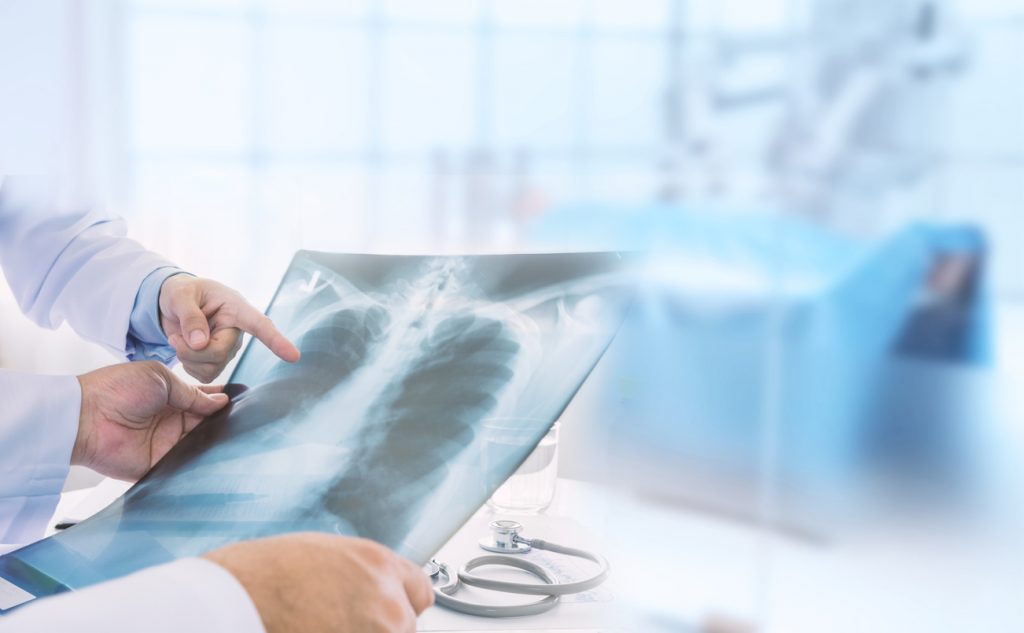What is a chest x-ray?
Chest x-rays (CXR) are a scan used to evaluate the lungs, heart and chest wall and can detect medical conditions such as:
- Pneumonia
- Heart failure
- Emphysema
- Lung cancer
- Tuberculosis
They are the most commonly requested x-ray in medicine and accounts for 50% of all x-rays performed.
What can a chest x-ray diagnose?
Chest x-rays are typically performed to:
- Investigate symptoms such as shortness of breath, chronic and persistent cough, chest pain, chest injury or fever
- To monitor the progress of chronic medical conditions such as cancer or heart failure
- As a screening test for employment, immigration or to join the defence force
Chest x-rays are also used to disgnose lung issues, bone problems of the chest wall, and some heart problems.
Get on top of your general health
Find and instantly book affordable GPs within Australia
Lung issues, including:
- Air outside the lung (pneumothorax: with air in the pleural space)
- Infection of the lung (e.g. pneumonia)
- Fluid in the lung (e.g. heart failure)
- Fluid around the lung (pleural effusion)
- Mass in the lung (e.g. lung cancer or infection)
Bone problems of the chest wall, including:
- Rib fractures
- Collar bone (clavicle) fractures
Heart problems, including:
- Enlarged heart (cardiomegally)
- Abnormal heart position (e.g. dextrocardia)
How is a chest x-ray performed?
Chest x-rays are performed by a radiographer in an x-ray room.
The patient is required to remove all jewellery which may obstruct the view of the chest, and remove upper garments including bra (containing metal), and dress in a loose fitting gown.
The posteroanterior (PA) view is standardly obtained. The patient stands with the chest pressed against the radiographic plate, with hands on hips and elbows pushed in front.
The radiographer will ask the patient to be still and to take a deep breath and hold it. Breath-holding after a deep breath reduces the possibility of a blurred image and also enhances the quality of the x-ray image.
The lateral chest view (side view) may be required to view further information in the chest. The patient stands sideways to the radiographic plate with arms elevated, and the x-ray is taken with the patient taking and holding a deep breath in.
Related specialists
Related tests
Also known as
- CXR
- AP CXR
- PA CXR
- Lateral CXR
Links
A: Use HealthEngine to find and book your next GP appointment. Click on the following locations to find a GP clinic in your state or territory.
This article is for informational purposes only and should not be taken as medical advice. If in doubt, HealthEngine recommends consulting with a registered health practitioner.
All content and media on the HealthEngine Blog is created and published online for informational purposes only. It is not intended to be a substitute for professional medical advice and should not be relied on as health or personal advice. Always seek the guidance of your doctor or other qualified health professional with any questions you may have regarding your health or a medical condition. Never disregard the advice of a medical professional, or delay in seeking it because of something you have read on this Website. If you think you may have a medical emergency, call your doctor, go to the nearest hospital emergency department, or call the emergency services immediately.








